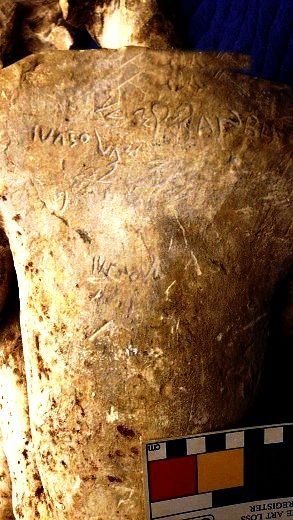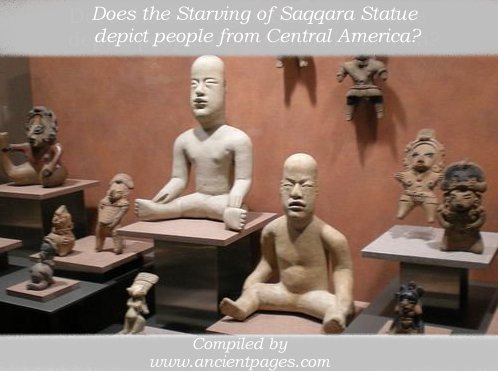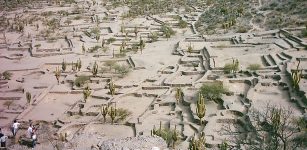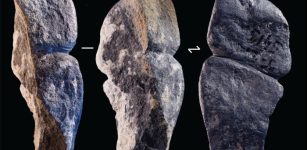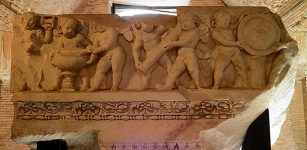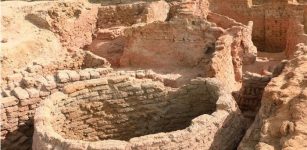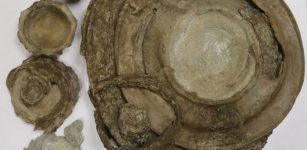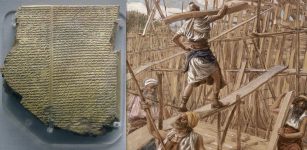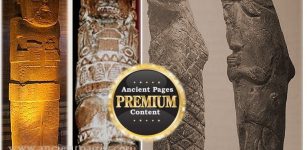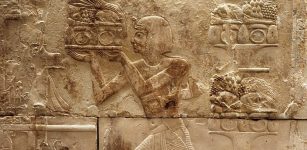“The Starving Of Saqqara Statue” And Its Undeciphered Inscription Could Pre-Date The Pyramids Of Egypt
AncientPages.com - In Canada, there is a very odd artifact that is possibly thousands of years old and is thought to pre-date the Pyramids of Egypt.
The enigmatic statue has baffled scientists for more than a decade.
The true origin and the age of the statue are unknown. In addition, the unidentified writing at the bottom makes the whole story even more baffling.
The sculpture is part of a collection brought to Canada by Vincent Diniacopoulos, a Greek immigrant from France. His wife Olga donated the collection and its archives to the Montreal's Concordia University in 1999.
Since then, experts from Cambridge University, the British Museum, the Brooklyn Museum, the Israel Museum and the Royal Ontario Museum have all been consulted.
The 67-centimeter-high limestone statue depicts two nude seated figures with large heads.
It also features inscriptions in what appears to be an ancient yet unidentified language.
The Starving of Saqqara has baffled scientists for a long time. Image credit: Concordia University
There are traces of script on the figures, but no scholar has been able to identify the language, deepening the level of curiosity.
"We've got a big mystery," said George Harrison, a professor in Concordia's department of classics.
"Most pieces, you look at it and you can tell that it's associated with this period or the other. This one, we can't nail it down."
The university believes the statue is of ancient Egyptian or Mediterranean origin and is calling it The Starving of Saqqara. The name Saqqara refers to the vast burial ground in the ancient capital of Memphis in Egypt. However, how this region relates to the work or how it received the name remains part of the mystery.
So, far, no authority has been able to confirm the sculpture's pedigree.
"One specialist commented that if it can be proven to date to the period when the Jews were exiled from Egypt, it could be one of the rarest finds of its kind," said Clarence Epstein, Concordia's director of special projects and cultural affairs
"Another archaeologist suggested the statue was either from a pre-dynastic tomb or was an outright fake."
However, Professor Harrison doubts that is the case.
No-one can identify the unknown writing at the bottom of the statue. Image credit: Concordia University
"You only fake things that are important. You fake a coin of Alexander the Great because he's famous, and somebody wants to buy into the mystique. You do not fake something like that," he said.
The figures elongated skulls and faces remind of pre Mayan/Aztec and ancient Olmecs of Central America.
So, does the "Starving of Saqqara Statue" pre-date the pyramids of Egypt?
"Those Egyptologists that we have consulted so far, either have been reluctant to confirm that it's ancient - or have said that it's not ancient.
Not one Egyptologist could tell us what it is, nor confirm that, if it's not ancient, then to propose from what period it dates from," Concordia University said.
For now, the Starving of Saqqara statue remains a yet unsolved mystery.
Copyright © AncientPages.com. All rights reserved. This material may not be published, broadcast, rewritten or redistributed in whole or part without the express written permission of AncientPages.com



